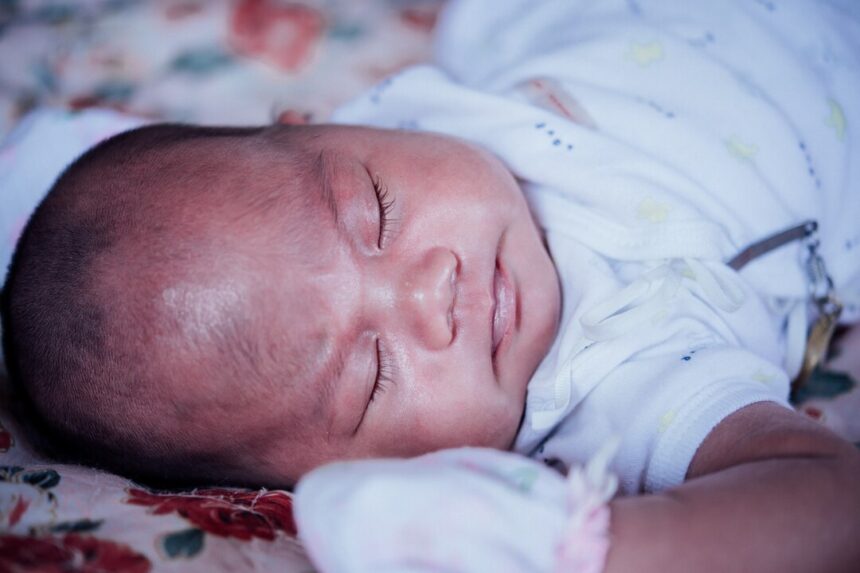Sudden Infant Death Syndrome (SIDS) is a heartbreaking and often unexplained phenomenon that claims the lives of seemingly healthy infants, typically during sleep. While the exact cause of SIDS remains unknown, researchers have identified certain risk factors and signs that may increase the likelihood of this tragic occurrence. Understanding these signs and risk factors is crucial for parents and caregivers to help reduce the risk of SIDS and ensure the safety of their infants. In this article, we explore the signs of SIDS and provide guidance on how to create a safe sleep environment for babies.
What is Sudden Infant Death Syndrome (SIDS)?
Sudden Infant Death Syndrome (SIDS) is defined as the sudden and unexplained death of an otherwise healthy infant, typically occurring during sleep. SIDS most commonly affects infants between the ages of one month and one year, with the highest risk occurring between two and four months of age. Despite extensive research, the exact cause of SIDS remains unclear, although experts believe that a combination of factors, including physical, environmental, and genetic factors, may contribute to its occurrence.
Signs of SIDS:
While SIDS is often sudden and unexpected, there are certain signs and risk factors that parents and caregivers should be aware of:
- Sudden Death: SIDS typically occurs without warning during sleep, with no apparent signs of distress or illness prior to the event.
- Silent and Still: Infants who succumb to SIDS are often found lying peacefully in their cribs, with no evidence of struggle or distress.
- Noisy Breathing: Some infants may exhibit noisy or irregular breathing patterns before succumbing to SIDS, although this is not always the case.
- Pale or Blue Skin: Infants who experience SIDS may have pale or bluish skin coloration, indicating a lack of oxygen in the bloodstream.
- Limpness: Infants affected by SIDS may appear limp and unresponsive when discovered, with no signs of movement or muscle tone.
Risk Factors for SIDS:
While the exact cause of SIDS remains unknown, several risk factors have been identified that may increase an infant’s susceptibility to this tragic condition:
- Sleep Position: Infants who are placed on their stomachs or sides to sleep are at a higher risk of SIDS than those placed on their backs. The “Back to Sleep” campaign, which promotes placing infants on their backs for sleep, has significantly reduced the incidence of SIDS.
- Soft Bedding: Soft bedding, including pillows, blankets, and stuffed animals, can pose a suffocation hazard to infants and increase the risk of SIDS. Infants should be placed on a firm mattress with no soft bedding or toys in the crib.
- Overheating: Overheating is a risk factor for SIDS, as it can increase an infant’s risk of respiratory distress and sudden death. Infants should be dressed in lightweight clothing and kept in a comfortable room temperature to prevent overheating.
- Smoking Exposure: Infants who are exposed to cigarette smoke, either during pregnancy or after birth, are at an increased risk of SIDS. Parents should avoid smoking around infants and ensure a smoke-free environment.
- Premature Birth: Premature infants are at a higher risk of SIDS than full-term infants, as their respiratory and nervous systems may not be fully developed. Close monitoring and appropriate care are essential for premature infants to reduce the risk of SIDS.
Prevention and Safe Sleep Practices:
While the exact cause of SIDS remains unknown, there are steps that parents and caregivers can take to reduce the risk of this tragic occurrence:
- Back to Sleep: Always place infants on their backs for sleep, both during naps and at night, to reduce the risk of SIDS.
- Firm Sleep Surface: Use a firm mattress and remove soft bedding, pillows, and toys from the crib to create a safe sleep environment for infants.
- Room Sharing: Consider room sharing with your infant, but avoid bed-sharing, as it increases the risk of suffocation and SIDS.
- Avoid Overheating: Dress infants in lightweight clothing and keep the room temperature comfortable to prevent overheating during sleep.
- Regular Prenatal Care: Attend regular prenatal check-ups and follow your healthcare provider’s recommendations to promote a healthy pregnancy and reduce the risk of SIDS.
- Breastfeeding: Breastfeeding has been shown to reduce the risk of SIDS, so consider breastfeeding your infant if possible.
- No Smoking: Avoid smoking during pregnancy and after birth, and ensure a smoke-free environment for your infant.
Sudden Infant Death Syndrome (SIDS) is a tragic and often unexplained phenomenon that claims the lives of seemingly healthy infants. While the exact cause of SIDS remains unknown, certain risk factors and safe sleep practices can help reduce the risk of this heartbreaking occurrence. By understanding the signs of SIDS, recognizing the risk factors, and implementing preventive measures, parents and caregivers can create a safe sleep environment for infants and promote their health and well-being.










